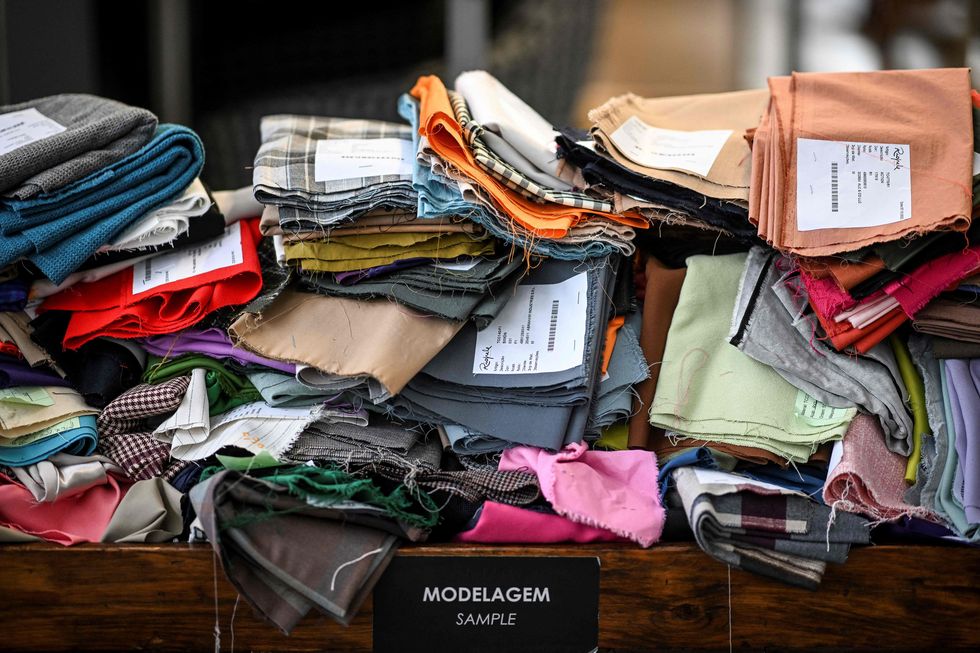Why Does Fast Fashion Fall Apart So Quickly?

Escalating up in Biga, Turkey, on the soil the place the historical Trojan War was at the time fought, Volkan Yilmazwas surrounded by leather-based. His father, Irfan, ran a tiny tannery small business, the place younger Volkan would path powering him, having notes on all the recipes and procedures, nostrils stuffed with the pungent odor of corrosive chemical compounds and decaying flesh. By the age of 11, he experienced presently discovered how to tan his first sheepskin. Now, 25 many years afterwards, below the moniker Tanner Leatherstein, Yilmaz is parlaying his insight into leather into an addictive TikTok presence involving entertaining vivisections of designer leather-based baggage. Yilmaz subjects Louis Vuitton, Bottega Veneta, and Mentor accessories to a litany of abuse, slicing them open up with an X-Acto knife, rubbing acetone on their surfaces, and lights shreds on fireplace to decide the top quality of the rawhide, finish, and tanning process. The moment enough torture has happened, he estimates the price tag of leather-based and labor for the merchandise, and leaves it up to the viewer to come to a decision if the benefit is really worth the marketplace price.
When it arrives to paying for a finished merchandise off the rack, there is the assumption that individuals get what they pay out for. But more and more, most clothing on the marketplace is, simply just put, no fantastic. According to a viral tweet, “Most Gen Z people will not even know what high quality vogue seems & feels like.” And even though that may well be a substantial generalization, it is inarguably correct that apparel high quality has dropped precipitously more than the past 30 several years. A pair of denims ordered at the Hole in 1995 was made of thick 100 {2f721a9a84cd1ef3e64bf507ea0c8ab2bc235122c146c2a4cbd42268917563c5} cotton and constructed to withstand years of large use. Now, the similar pair of denims expenditures $17 following several special discounts, has extra elastane, and is liable to tumble apart just after various washes. Clothes is the solitary category that has declined in cost considering that 2000 in spite of egregious inflation somewhere else. But ironically, as great-quality clothes turns into hard and more challenging to come across, it is starting to be significantly significant to a developing cohort of consumers.
“[I think a lot of people my age are wondering] why our clothes are not lasting as extensive and why [we] have to replenish every little thing so immediately,” Kira Mungai, a 22-calendar year-old receptionist primarily based in Seattle, states. Mungai is on the vanguard of a small cohort of Gen Z individuals that prioritize top-quality craftsmanship, organic elements, and mindful consumption more than mammoth Shein hauls. Twenty a long time ago, when speedy manner turned commonplace, the novelty of becoming ready to pay for a new wintertime coat every calendar year was irresistible. But as producers minimize corners on cloth high-quality and labor in order to preserve expenditures down and the conclude product suffers, now all anybody needs to purchase is a wintertime coat that lasts.
Additional From Harper’s BAZAAR

“I love raiding my mom’s closet, mainly because she retains all her clothes in these types of good situation, whereas mine will break fairly simply,” Maya Hall, an 18-calendar year-old political science significant at the University of Oregon in Eugene, states. “From freshman to junior year of higher faculty, I was large on getting PacSun jeans, but I would have to acquire the very same pair [pretty] frequently, mainly because they would shrink definitely rapidly and seemed demolished just from me walking all-around in them.” Hall loves her mom’s classic Levi’s that hail from the 2000s, mainly because they’re a thicker, a lot more strong product than what she’s made use of to, and stay accurate to size after a wash.
According to Keri Inge-Marshall, a 21-year-outdated resourceful creating significant at Columbia Higher education in Chicago, a great deal of her generation’s knowledge of outfits good quality has taken spot incidentally. Possibly they dip into their parents’ closets like Corridor, or they head to the thrift retail store searching for classic treasures and realize that the cute Y2K-period clothing—even the inexpensive stuff—lasts longer than nearly anything they’ve at any time acquired new.
“Quality is the most underrated, minimum-talked-about aspect of sustainable trend,” suggests Andrea Cheong, whose TikToks eviscerating the high quality of shopping mall makes provide to educate customers on what factors of development make an product of outfits last. Cheong is perhaps the most obvious of a new course of material creators, which include Tanner Leatherstein and Derek Male, the notorious “menswear guy” on Twitter who’s pendantic threads on the origins of cashmere goat hair routinely go viral, supporting individuals relearn that there is a large amount extra to garments than just how it seems.
“Our romantic relationship with manner has grow to be so surface area amount, and I think persons are just unwell of it,” Cheong says. “I constantly tell people today you really should choose your dresses like you decide on your close friends. If they’re not as stunning on the inside as they are on the outside, why are you squandering your time?” When shopping in individual, she advises turning garments inside of out to glance for loose threads, making certain buttons are securely connected, and reading through the labels to fully grasp the composition of supplies. For online purchasing, she claims to zoom in on the pics of the garment to make certain anything appears to be appropriate. “Most of us innately have a feeling of what appears ideal or not, but we never necessarily have the terminology or foundation or standard expertise to be capable to make clear why,” she suggests. And individuals are getting take note her films frequently garner responses like, “This has fully altered my approach to browsing.”
This renewed desire for high-quality comes from a annoyance with the solutions offered, but also out of necessity. Thanks to the value-of-living crisis, individuals can no lengthier afford to pay for to store with abandon like they after did. When the price of a carton of eggs has risen by 70 p.c in a one year, a $100 regular Shein haul turns into, for several homes, out of the query.
“There’s this strategy that when it will come to less expensive manufacturers like Shein and Permanently 21, they are making clothing for bad persons,” Lakyn Carlton, a personal stylist and sustainable vogue qualified based in Los Angeles, suggests. “No, they are not. They are doing it so they can make as significantly funds off you as attainable, even with your limited revenue.”
Realistically, the capacity to afford high quality has usually been dictated by profits. “There’s normally been a very clear divide amongst brand names that treatment for high quality and brand names that do not,” Carlton says. But now that any person can buy elegant apparel on a whim with a constrained budget, it is led to not only an overproduction disaster, but a totally ahistorical feeling of entitlement in regard to what we place on our bodies. When clothing was significantly less economical, a single simply experienced to put on what they owned until it wore out, irrespective of regardless of whether it was trendy or not—a notion so basic it now passes for wisdom in the subject of sustainable fashion. The actuality is that all clothing involves skilled labor to create, and it should not be so effortless to get and discard.
Collectively, the less content buyers are with crap, the more firms will have to give some thing excellent again. Yilmaz predicts that above time, larger brands will eliminate market share to smaller sized craftsmen because, “Gen Z could not treatment much less about advertising and marketing fluff.”
Cheong is hopeful that her marketplace watchdog videos are becoming noticed by individuals with sufficient electrical power to impact the top quality of outfits creation at major brands. “We’re very considerably in the beginning of, ‘This lady will not shut up she’s been all around a although now, and now we have bought to listen,’” she suggests.
Many others are extra skeptical. “Overall, it really is a good thing for persons to start out considering about the high quality of their clothes, but offered the way style operates, it is going to choose a great deal extra than that [to make a big difference,” Carlton says.
Even though it can be nonetheless considerably far too early to inform how this will perform out, the refusal to acquire solutions of diminishing top quality continues to be just one tiny nevertheless poignant form of resistance, a way of sustaining one’s dignity amid a marketplace that expects—and depends—on you to accept the problems you’re given.
Maybe when it will come to getting apparel, it is sensible to retain in head the previous adage: A fool and his dollars are generally parted. By educating ourselves about what excellent-excellent clothes really should be, we’re much less most likely to participate in the idiot.
Isabel Slone is a journalist and cultural critic based in Toronto, Ontario.

.png)


